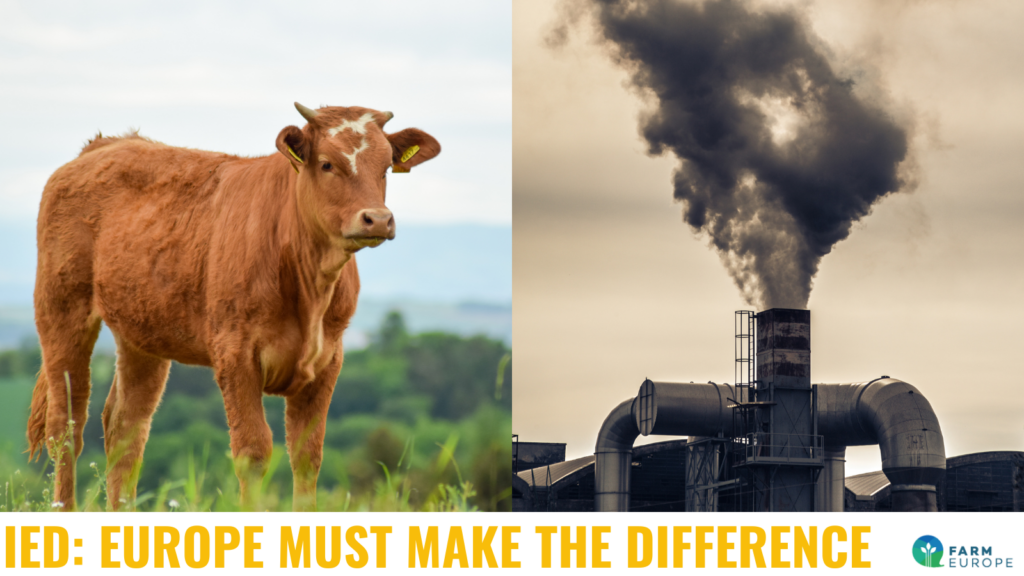The European institutions reached, yesterday, a provisional deal on the revision of the Industrial Emission Directive (IED), after very tense discussions on whether or not to include certain agricultural sectors in the scope of this regulation. Finally, thanks to the determination of the rapporteurs of the European Parliament, the co-legislators decided not to include the ruminant livestock sector, which is a move welcomed by Farm Europe. They also decided to tighten the thresholds for sectors already covered by this regulation: pig and poultry producers will be affected by this new regulation.
However, all livestock sectors are covered by two very important — and most welcomed — provisions obtained by the European Parliament :
- First, the European Commission will have to “assess, and report to the European Parliament and the Council on the need for Union action to comprehensively address the emissions from the rearing of livestock, in particular cattle, taking into account the range of instruments available and the specificities of the sector”, by December 2026. This is a recognition that the specificities of agriculture should be covered by an adequate regulation, not IED. In other words, this provision paves the way for a potential exclusion of all livestock sectors. Agriculture must be lifted outside the remit of this regulation, and covered by a dedicated framework, as long as farmers are working with nature and animals. This activity should not be assimilated to an industrial activities. Therefore, a fit for purpose framework must be established grasping the complexity of agriculture when it comes to its environmental footprint, but also its co-benefits.
- Second, “the Commission should assess, and report to the European Parliament and the Council on the need for Union action to comprehensively address the emissions from the rearing of livestock, in particular cattle, taking into account the range of instruments available and the specificities of the sector”. This provision covers all livestock activities, and calls upon the Commission to set up a level playing field for all product placed on the EU market, meaning both Made in Europe and imported. At a time where the European Union is multiplying efforts to foster trade, producers would, rightly, not understand to be confronted with unfair competition from imported meat with higher environmental footprint. In fact, Europe would be shooting itself in the foot, increasing the burden on its producers, while at the same time opening widely its market.
Therefore, while the compromise reached by the trilogue is certainly not perfect for all producers, it contains provisions that paves the way for an improved and more consistent approach that require a collective work of all livestock producers together, ahead of the review clauses.
